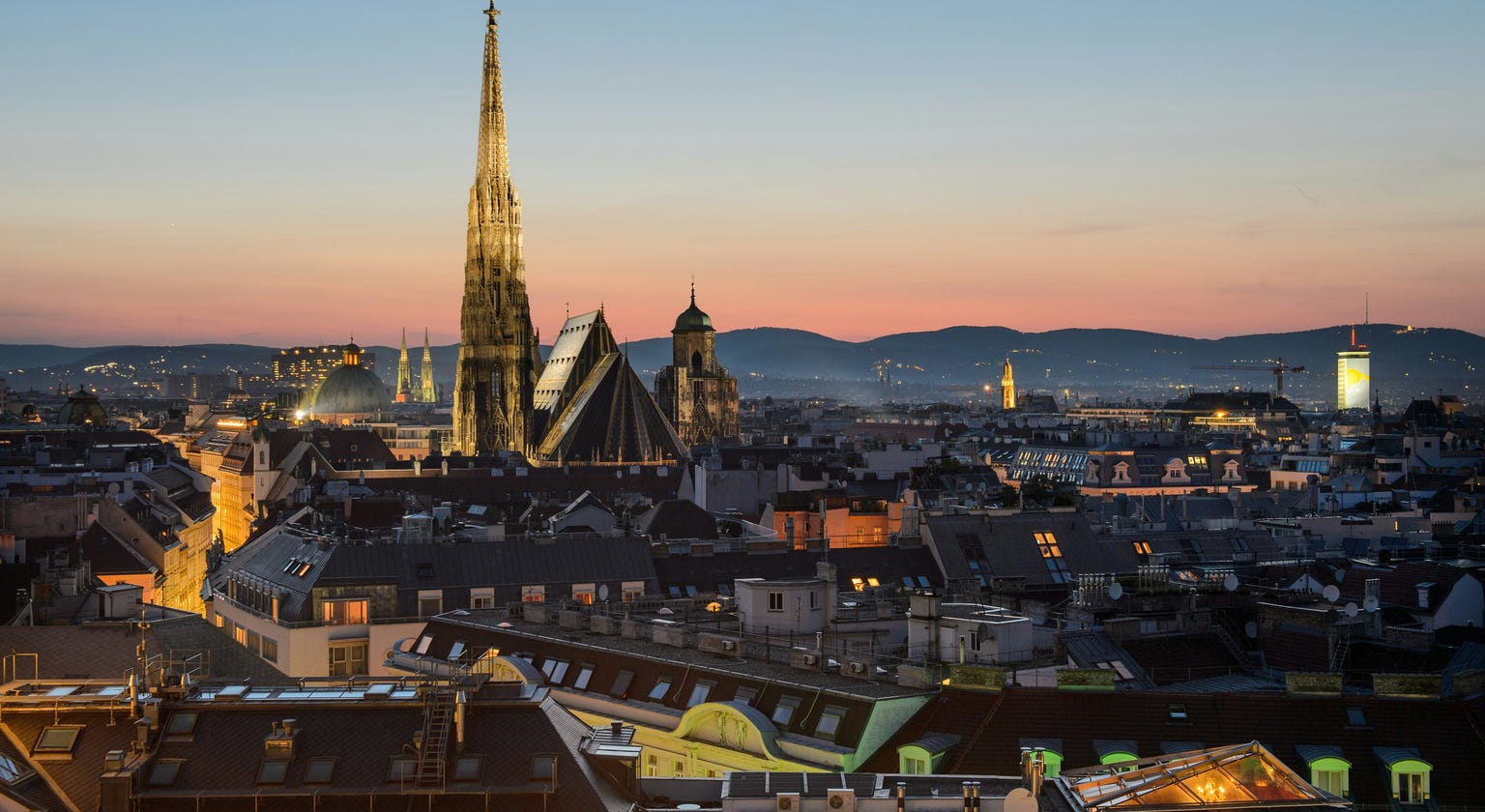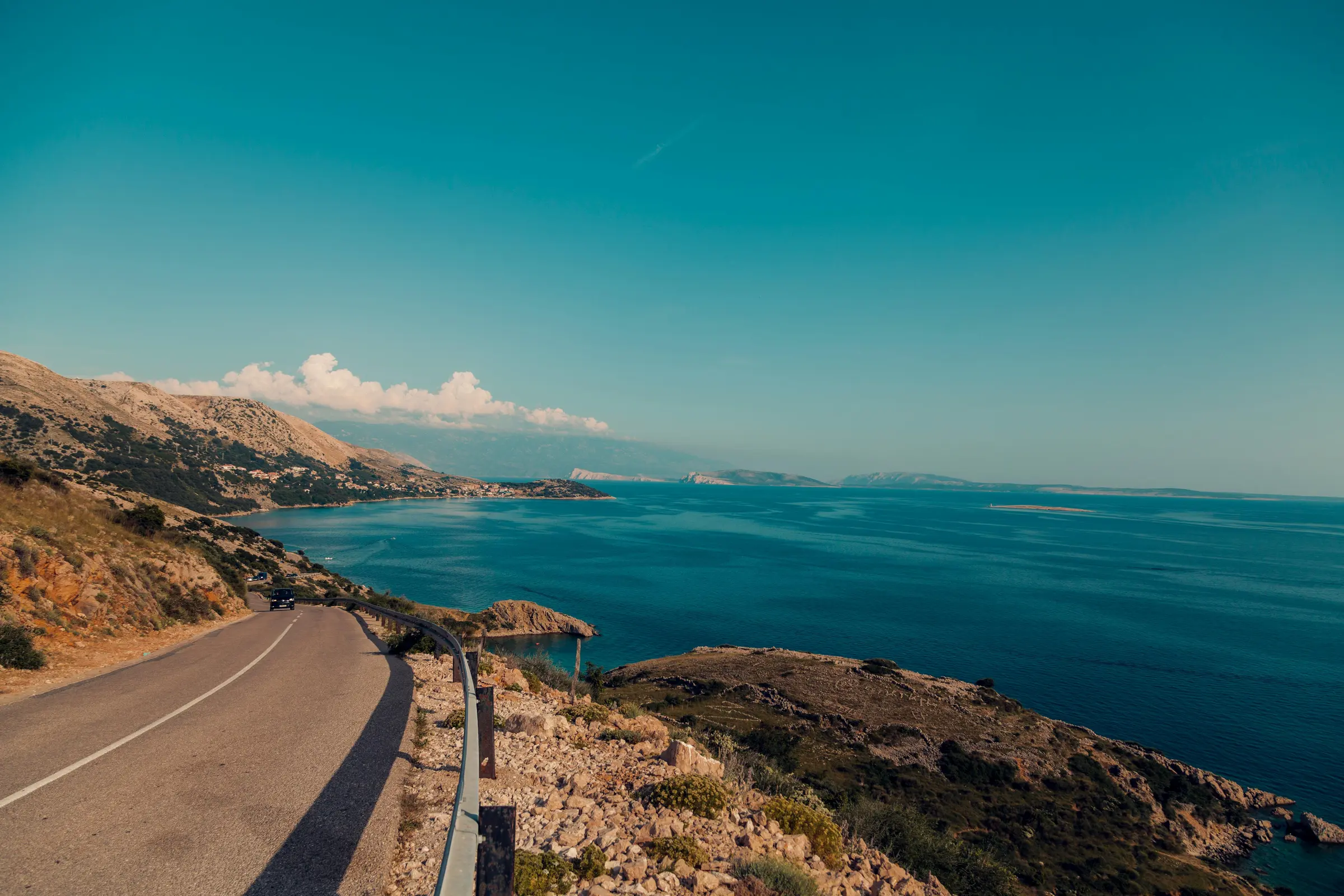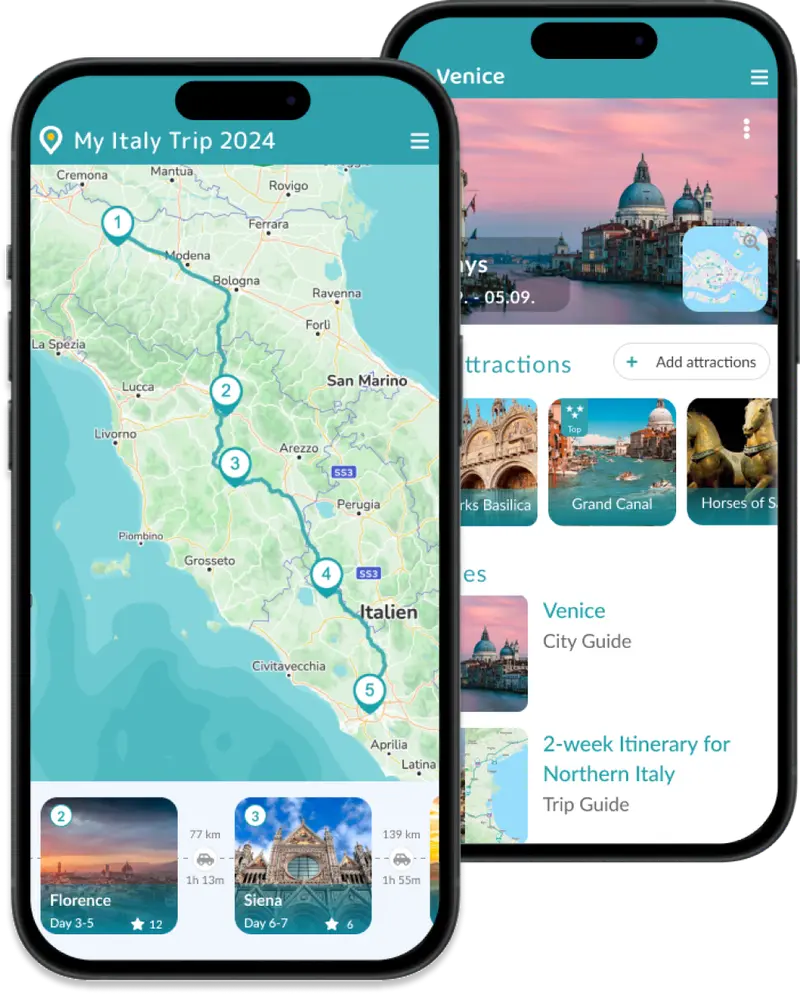Vienna is different. Step into a city where imperial grandeur meets modern life. Stroll down historic streets alive with the spirit of Empress Sissi, and the dry wit of Helmut Qualtinger. Cozy coffeehouses invite you to linger, while Qualtinger’s Wienerlied reminds you that Vienna’s soul is found in its humor and melancholy. Between opulent museums, a thriving art scene, and its legendary music tradition, Vienna isn’t just a capital — it’s a mood, a way of life all its own. It’s a place where food lovers mingle with art enthusiasts, and dreamers cross paths with night owls – a vibrant mosaic where everyone can find their perfect corner.
Top Highlights of Vienna










Travel Inspiration


Travel Information
Best Time to Visit
Vienna is a great destination year-round, though July and August can be less pleasant due to the heat.
Spring (April to May)
Spring is one of the best times to visit. The weather is mild, flowers are in bloom, and the city's famous cafés come to life. It's ideal for leisurely walks, exploring Schönbrunn Palace, or visiting the zoo.
- Temperatures rise from 10°C in March to a pleasant 20°C to 25°C by May.
Summer (June to August)
Summers are hot, often exceeding 30°C, but the city buzzes with festivals and open-air events. The Danube offers a refreshing escape from the heat.
However, with climate change, July and August are less ideal for city trips. In 2024, Vienna saw many tropical nights without relief from the heat. We recommend heading to lakes in Carinthia, Upper Austria, or Salzburg instead.
Autumn (September to October)
As school resumes, crowds thin out and the city is bathed in golden autumn colors. It’s the perfect time to enjoy the wine taverns on the Viennese vineyards or hike in the Vienna Woods. Temperatures are comfortable, ranging from 15°C to 20°C, and if it rains, Vienna's excellent museums are a great alternative.
Winter (November to February)
Winter turns Vienna into a magical wonderland, especially around Christmas. With temperatures between -5°C and 5°C, the festive Christmas markets and ice skating at Rathausplatz create a charming atmosphere. It's the city's quietest season for tourists, apart from Christmas.
Vienna also hosts its famous ball season from November to February, with over 450 balls held across the city. Attending one is a must — brush up on your dance skills beforehand to make it more enjoyable!
Getting there by Train
Vienna is easily accessible from neighboring countries thanks to Austria's well-developed rail network. The main operator is ÖBB, but if you're coming from Germany (Munich) or Switzerland (via Bregenz), you can also take the Westbahn. Trains are excellent, and as of 2024, likely more reliable than ever.
Train Stations
International trains arrive at Hauptbahnhof, Westbahnhof, or Bahnhof Wien Meidling.
Travel Times to Vienna
From cities like Munich and Prague, it’s only a 4-5 hour ride—making flights unnecessary.
- Budapest: 3 hours
- Warsaw: 7-8 hours
- Zurich: 8-10 hours
For longer journeys, ÖBB’s night trains (Nightjets) are a great choice, saving time and accommodation costs. Most night routes take 10-11 hours.
- Venice: 9-11 hours
- Berlin: 9-12 hours
- Hamburg: 13 hours
Discounted Tickets
Booking in advance lets you grab Spartickets at reduced rates.
Getting there by Plane
Vienna is served by Vienna-Schwechat International Airport, about 20 km from the city. You can reach the center in 30-40 minutes by S-Bahn, a suburban train. If you're in a hurry, the City Airport Train (CAT) or a taxi are faster alternatives, but we recommend the S-Bahn. It costs less than 5 euros, is just as comfortable, and much cheaper. The CAT is heavily advertised at the airport, often misleading uninformed tourists.
Getting there by Car
Driving is only worthwhile if Vienna is part of a longer road trip. Otherwise, opt for the train or plane (only for long distances!). Once in Vienna, you won’t need a car, and parking is expensive.
The highways are excellent, but remember to buy a vignette (toll sticker) ahead of time. The most affordable parking is at the Park & Ride areas on the city’s outskirts, e.g. Hütteldorf.

Getting Around in Vienna
Vienna boasts one of the world’s best public transport systems, making it easy to explore the city without a car. The Wiener Linien operates subways, trams, and buses, covering nearly every corner of the city.
Subway
- 5 subway lines (U1 to U6) serve most of Vienna and are the city’s main transport backbone. A new line (U5) is currently under construction.
- Operating hours: Daily from around 5:00 AM to midnight. On weekends and public holidays, trains run all night.
- Frequency: Every 2–5 minutes during rush hours, 7–10 minutes during off-peak times.
- Rush hours: Typically 7:30 AM – 8:30 AM and after work.
Tram
- Network: One of the largest in the world, with over 30 lines.
- Highlights: Lines 1 and 2 follow the scenic Ringstraße, passing many historic landmarks.
- Operating hours: Generally from 5:00 AM to 11:30 PM, with variations by line.
Bus
- City buses: Fill in where the subway and tram don’t reach.
- Night buses: Operate from midnight to 5:00 AM.
- Operating hours: Vary by route; night buses usually run hourly.
Tickets
You can buy tickets online via Wiener Linien, through the app, at station machines, or in tobacco shops (Trafiken).
- Single ticket: Valid for one trip, including transfers (€2.40).
- Time tickets: Available for 24h, 48h, or 72h and valid across all public transport.
- 7 Days VIENNA: Around €23 (or €3 cheaper online), valid for a week from the start date.
- Vienna City Card: Includes public transport plus discounts on attractions.
- Discounts: Available for children and seniors.
- Ticket validation: Paper tickets must be stamped at blue machines before travel, except those with a printed date.
Important to Know!
When tourists complain about the perceived unfriendliness of the Viennese, it’s often because they don’t follow public transport etiquette. Locals aren’t shy about expressing their annoyance directly. To avoid the famous Viennese "Grant", stick to the following rules:
- Stand right, walk left: On escalators, always stand on the right, leaving the left free for those in a hurry. Keep your luggage on the right side as well, so you don’t block the flow of people.
- Let people exit first: This should be obvious, but it needs repeating. Before boarding, let passengers get off. Stand to the sides of the doors and keep the middle clear. Vienna’s subways come every two to three minutes, so no need to rush.
- Stick to the right side on stairs and walkways to keep foot traffic moving smoothly.
- Use headphones for phone calls or music — people around you value peace and quiet.
- Eating on public transport is frowned upon. Be considerate and spare your fellow passengers from the smell.
Follow these simple rules, and you'll contribute to a pleasant experience and enjoy the Viennese calm instead of encountering its grumpiness.
Additional Info
- WienMobil app: Offers route planning, real-time updates, and ticket purchase options.
- Accessibility: Most stations and subway trains are wheelchair accessible.
- Bikes: Allowed on subways outside peak hours but not on trams or buses.
Alternatives
- Citybike Vienna: A bike-sharing system with stations citywide; the first hour is free.
- E-scooters: Available through various providers. Make sure to follow parking rules and traffic laws!
Culinary Delights in Vienna
Vienna is so much more than schnitzel. The city serves up variety—from traditional tavern fare and classic coffeehouse treats to cutting-edge culinary hotspots, international cuisine, and a vibrant bar scene. A walk is often all it takes to go from a rustic Beisl to a cosy Heuriger or a fine dining experience.
Here’s an overview of typical Viennese dishes:
We’ve put together a selection of our favorite spots for you—ranging from charming to cosmopolitan, down-to-earth to delightfully creative.
Our Restaurant Recommendations
Favorite Spots
Gergely's
Tucked away in the heart of Schlossquadrat in Vienna’s 5th district, Gergely’s is our top pick for a perfect evening out. The menu centers around perfectly prepared steaks, paired with delicious sides. What truly sets the place apart is its warm, personal service and the inviting charm of a historic vaulted cellar. In summer, the romantic garden — one of the city’s most beautiful and secluded — adds more romance to the experience.
Klee am Hanslteich
Nestled in a picturesque setting by the Hanslteich in the Vienna Woods, this restaurant offers outstanding cuisine. Its creative menu and spacious garden make it a popular getaway spot, especially in summer. Only accessible by car.
(Wine) Bars
Eulennest Vinothek
Located at Operngasse 30 in the 4th district, this wine bar offers lovers of fine wine a selection of over 500 exquisite Austrian and international labels. Particularly exciting is the ever-changing list of wines by the glass – perfect for tasting and discovering. Eulennest also serves a small but excellent menu, featuring standout dishes like beef tartare and Vienna’s best crème brûlée.
Kruger’s American Bar
Centrally located near the opera, this stylish bar blends international bar culture with Viennese flair. Elegant wood paneling, comfy leather sofas, and an extensive cocktail menu make it ideal for a classy, romantic nightcap.
Nightfly’s American Bar
Since 1993, Nightfly’s American Bar on Dorotheergasse 14 has been a go-to spot for cocktail lovers. With over 250 cocktails and seasonal drinks, it offers a classic bar ambiance right in the heart of Vienna. When Kruger’s is packed, this place usually still has space.
Trendy Cafés
Balthasar Kaffee Bar
Located in the 2nd district, this café is one of the city’s hippest spots. The industrial design with golden lamps and light furnishings creates a modern vibe. The focus is on excellent coffee that delights connoisseurs.
Kaffeemik
A small but fine café in the 7th district that celebrates third-wave coffee culture. It features changing selections from international micro-roasters – perfect for those eager to explore new flavor profiles.
Café Phil
Part living room, part bookstore, part café – Phil in the 6th district is a creative meeting spot with great coffee, breakfast served late into the day, and a relaxed vibe amid second-hand furniture, books, and record players. With a bit of luck, you’ll find a seat.
Classic Coffee Houses
Café Central
An icon of Viennese coffeehouse culture in Herrengasse. Once frequented by literary figures like Peter Altenberg and Sigmund Freud, today the café attracts guests from around the world with its marble columns, high ceilings, and superb coffee. The in-house cakes are legendary. Reservation recommended!
Café Demel
Formerly the Imperial and Royal Court Confectioner – famous for its artful cakes, donuts, and strudels. This traditional café on Kohlmarkt impresses with its patisserie and historic charm.
Café Sperl
A true Viennese original on Gumpendorfer Straße, featuring billiard tables, Thonet chairs, and plenty of turn-of-the-century charm. A quiet, classic spot for reading the paper, enjoying pastries, and sipping coffee.
Café Landtmann
Founded in 1873 on the Ringstrasse, Landtmann was the regular café of actors, politicians, and intellectuals. Its location opposite the Burgtheater and university still makes it a key meeting place with a grand stage.
Café Hawelka
A cult artist café in the 1st district with a slightly decaying charm. In the evenings, they serve homemade “Buchteln” (sweet rolls), while during the day you can enjoy strong coffee and a dose of Viennese history in an intimate, timeworn setting.
Café Museum
Designed by Adolf Loos and located with a view of the opera. It’s less touristy than some of the other classics, but just as stylish – perfect for a “Melange” with a literary flair.
Italian
Stella Marina
Stella Marina on Florianigasse 37 offers authentic Italian cuisine in a cozy setting. Guests especially appreciate the homemade pasta and fresh seafood.
Ristorante Al Borgo
Located between St. Stephen’s Cathedral and Stadtpark, Ristorante Al Borgo serves traditional Italian specialties with passion and craftsmanship. The rotating menu and elegant ambiance invite you to indulge.
Materia Restaurant
Materia Restaurant on Tigergasse 31 brings modern Italian cuisine to Vienna. A weekly changing menu and the use of high-quality ingredients define this place.
La Tavolozza
Since 1981, La Tavolozza on Florianigasse 37 has been serving fine Italian cuisine by candlelight. The exclusive atmosphere and passion for hospitality make it a special dining experience.
Indian
Zum Moghulhof
For fans of Indian cuisine, Zum Moghulhof on Burggasse 12 offers authentic and superbly prepared dishes. The diverse menu and attentive service ensure a flavorful and memorable experience.




